
Falstaff: He said/She said
ReviewOn the singing
**Jenna: **Canadian favourite Gerald Finley in the title role was a utter pro, something you see very rarely live. Seems like an obvious thing to say when it comes to Finley, but he performs at a level which we all strive to attain, and to see it in person is a real treat. He began the night with his trademark gorgeous sound, and simply took off from there. As he sang he was a study in attention to vowels; not a sound was made without intent. When he strayed from traditional singing, he showed off the most extraordinary palate of sound I’ve ever heard live. He made gruff barks, roars, put on a lady-voice, and every imaginable affect in between. His “Belly Aria” nearly slayed me. You couldn’t not love him as Falstaff, the guy who’s unapologetic about his life of excess and his demands on other people. His fat suit was in that sweet spot between realistic and cartoon-like, and it was obvious light enough for Gerald to move quickly and hilariously around the stage. For my favourite Finley-tableau, I’m torn between the sight of Falstaff doing a little jig downstage left, and the beached-whale effect of his jumping poor Alice Ford.
Greg: Gerald Finley sounds like a million bucks, and let me tell you I was more than a little pleasantly surprised to see such physical comedy chops. The fat suit, the prosthetic neck covering, heavy makeup and very physical characterizations seemed to invigorate his tone as the show went on. Marie-Nicole Lemieux as Quickly stole my heart. A beautiful womanly contralto both physically and vocally. I was excited to hear Simone Osborne as Nannetta and she nailed the Faerie Queene’s aria; unfortunately I found her the most regular victim of Debus’s bombastic (yet very skilled pit). Frédéric Antoun’s Fenton is a delight. Handsome man, beautiful tone. I could listen to him for days and totally got jealous whenever he kissed Nannetta. A free open Italianate tenor who I found had a surprising strength in his lower register. Colin Ainsworth and Robert Gleadow stole every scene they entered, but matched it with some seriously top quality singing. Lauren Segal as Meg brought a bright face to a dark tone and made some lovely music alongside the other ladies. Speaking of which - I need to take a moment to applaud all of them for their amazing ensemble work. I’ve sung Bardolfo in my summer program days, and it’s not a walk in the park, I guarantee you that. Bravi, tutti!!
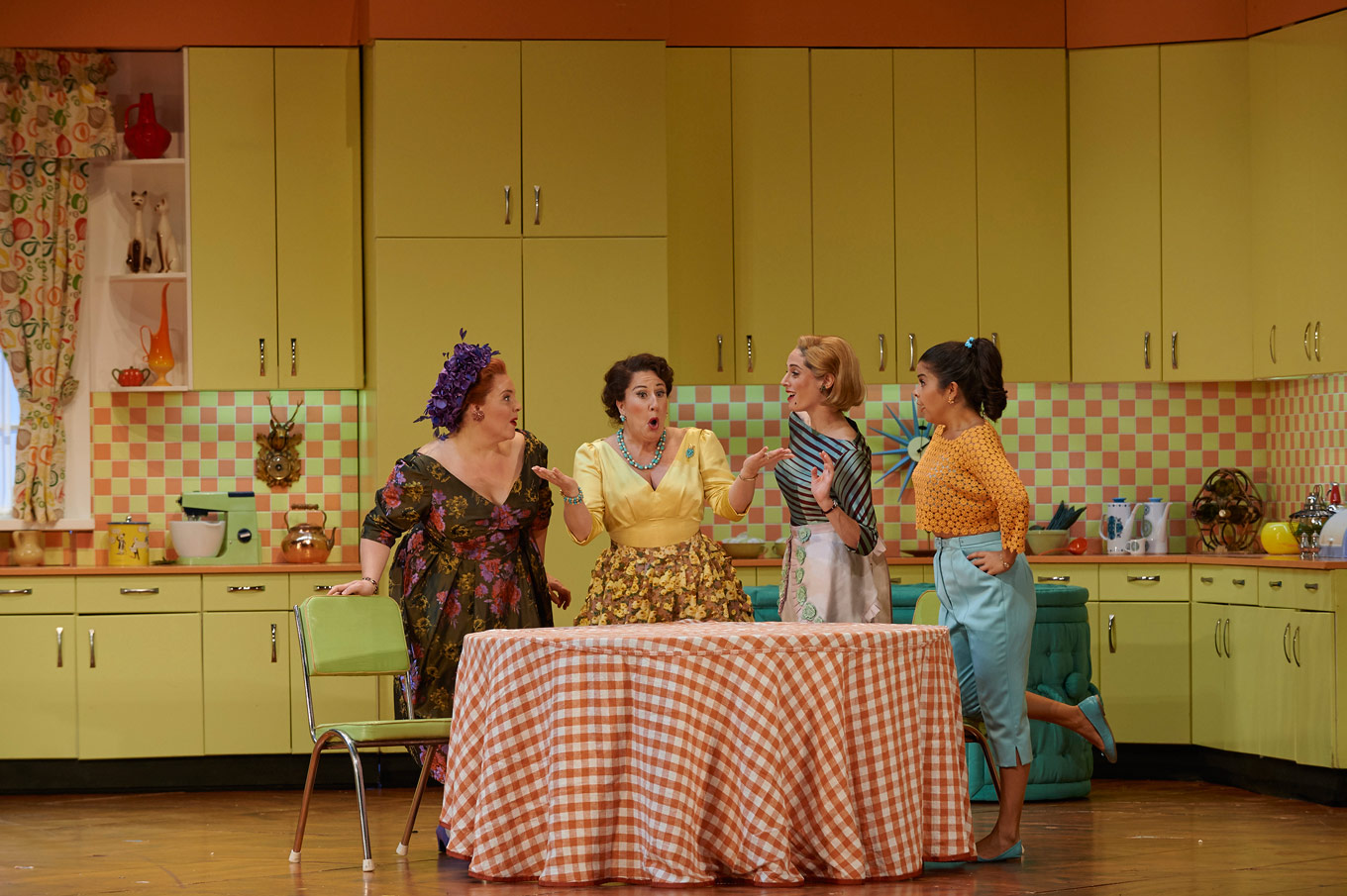
**Jenna: **The ladies were a total hoot. As the coveted Alice Ford, soprano Lyne Fortin was another standout performance for me. She had a strong, silvery tone when she needed to use it, and could cackle and gossip with the best of them; that strength in her voice kept Alice a powerful character, and one we rooted for. Mezzo-soprano Lauren Segal was delightful partner in crime as Alice’s friend Meg Page; she sang well, although appeared at times a bit stiff onstage (to be fair, the role of Meg doesn’t have the same moments of fun as the other ladies). As Mistress Quickly, contralto Marie-Nicole Lemieux was just a riot. She was the one who held her own beside Finley in the physical comedy department, and still she used her (gorgeous!) voice to pass off the jokes as well (Greg, didn’t you see her apply lipstick while singing a word?) Marie-Nicole was a total hit, absolutely the epitome of an unforgettable supporting character. Simone Osborne was so freaking adorable as Alice’s daughter, Nannetta; Carsen really took advantage of Nannetta’s youth to set her apart from the rest of the ladies, and Simone was a perfect, larger-than-life teenager. She always sings sweetly, but I lost her at times over the orchestra. Her third act aria has some pretty wicked staging; I really wished Carsen hadn’t put chorus members moving slowly in front of her. I’ll give him kudos for keeping the production an ensemble show (it’s not just about her pretty singing, I get it), but it gave me music staff stress to see people continuously blocking Simone’s line of sight with Johannes. We had great seats in the orchestra level, but the rings are much kinder to the sound balance in the Four Seasons Centre, and I look forward to hearing her again when I come back and sit higher up.
On the theatre of it all:
**Greg: **The laurels for this one definitely are split between the deft hands of Colin Ainsworth as Bardolfo (who is kinda sexy when he’s a little dirty), Robert Gleadow as Pistola, and Marie-Nicole Lemieux as Mistress Quickly. I’m a sucker for anyone who can muster up some seriously clean physical comedy, and these three do not disappoint. In fact they thrill. The character choices made by these three were exceptionally well-driven and thoroughly thought out. Lemieux’s Quickly is a bright spot on stage wherever she may land. As the corpulent Falstaff, Finley is a treat. Some great mugging, with some moments of delicate sincerity layer-up to make him a real-life human being - albeit a larger-than-life one. I found Russell Braun’s Ford a little to demonstrative almost to the point of overwrought. There was real anguish in his physicality during his Act 2 aria, but it wasn’t matched by fire in the belly with regards to the singing. I felt it was a bit disconnected.
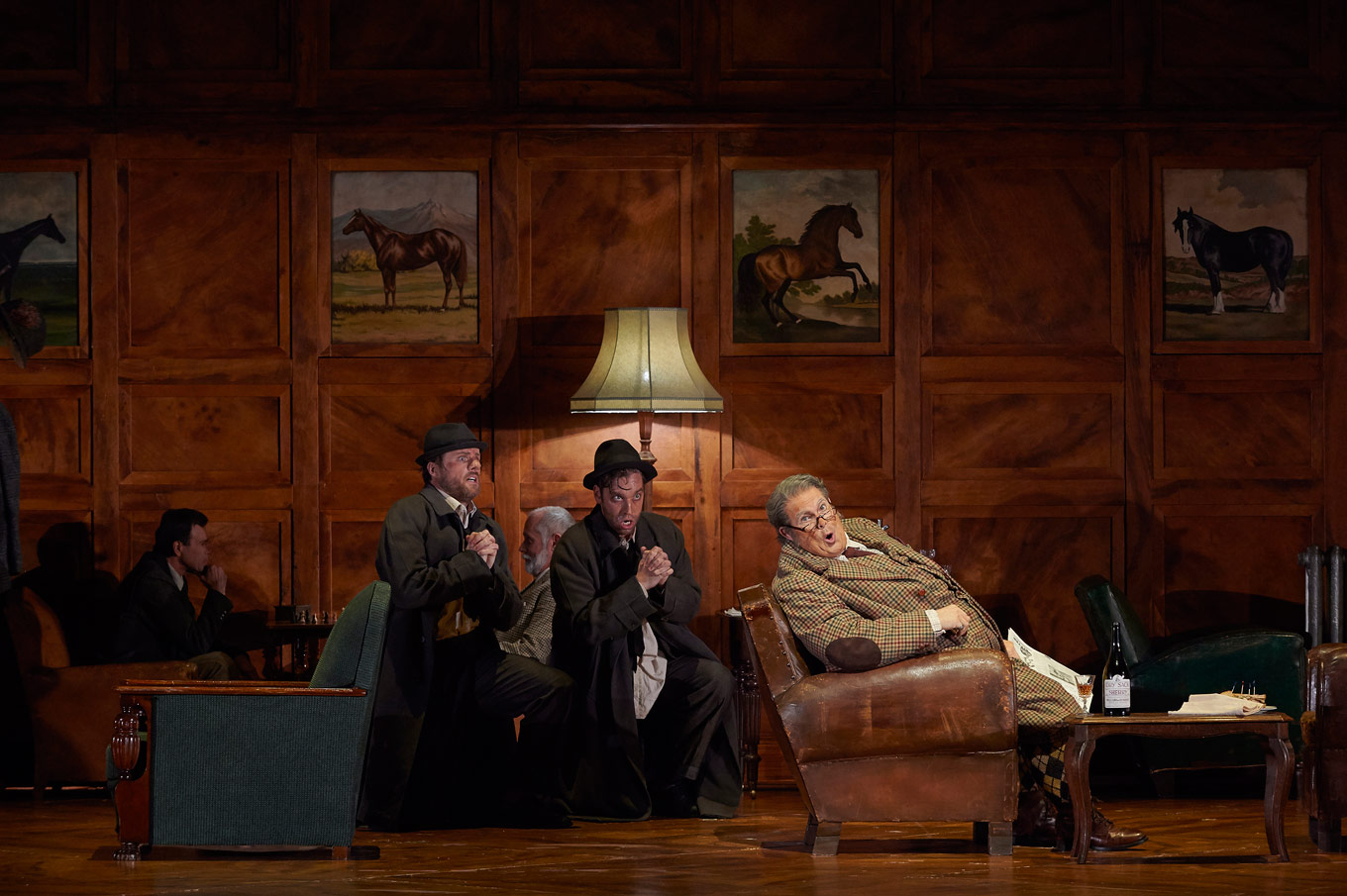
**Jenna: **The men were strong, too. Robert Gleadow and Colin Ainsworth were hilarious compulsive kleptomaniacs as Pistola and Bardolfo. I loved the cartoon-like disheveled look on both of them; they were appropriately shady with plenty of physical comedy, including two onstage wipe-outs by Gleadow, only one of which was staged (Gleadow himself confirmed this with me. Brilliant). Michael Colvin was pushy and creepy as Dr. Caius, the guy after the young Nannetta, with just the right insistent sound. He was a perfect foil to Frédéric Antoun’s Fenton, which was wide-eyed and airy and sweet. I loved Frédéric in last season’s Dialogues des Carmélites, and it was great to hear him singing some Italian rep. He sounded fresh and happy, and he and Simone were just too darn cute as a couple onstage. As Ford, fellow Canadian fave Russell Braun was perfectly uppity and easily bothered, a fantastic foil to Gerald’s Falstaff. He too got covered by the orchestra at times, and it weakened him as a worth opponent to Falstaff. Russell is a great singer-actor, and he didn’t skimp on the acting chops with Ford either; I loved all the sentiments, but they were often inaudible (again, looking forward to my higher-up seats later this month). Russell does win for best costume, when he’s in disguise as “Fontana”: a gold suit that screamed of New Mexico and of casinos, with the nastiest mullet I’ve ever seen. Loved it.
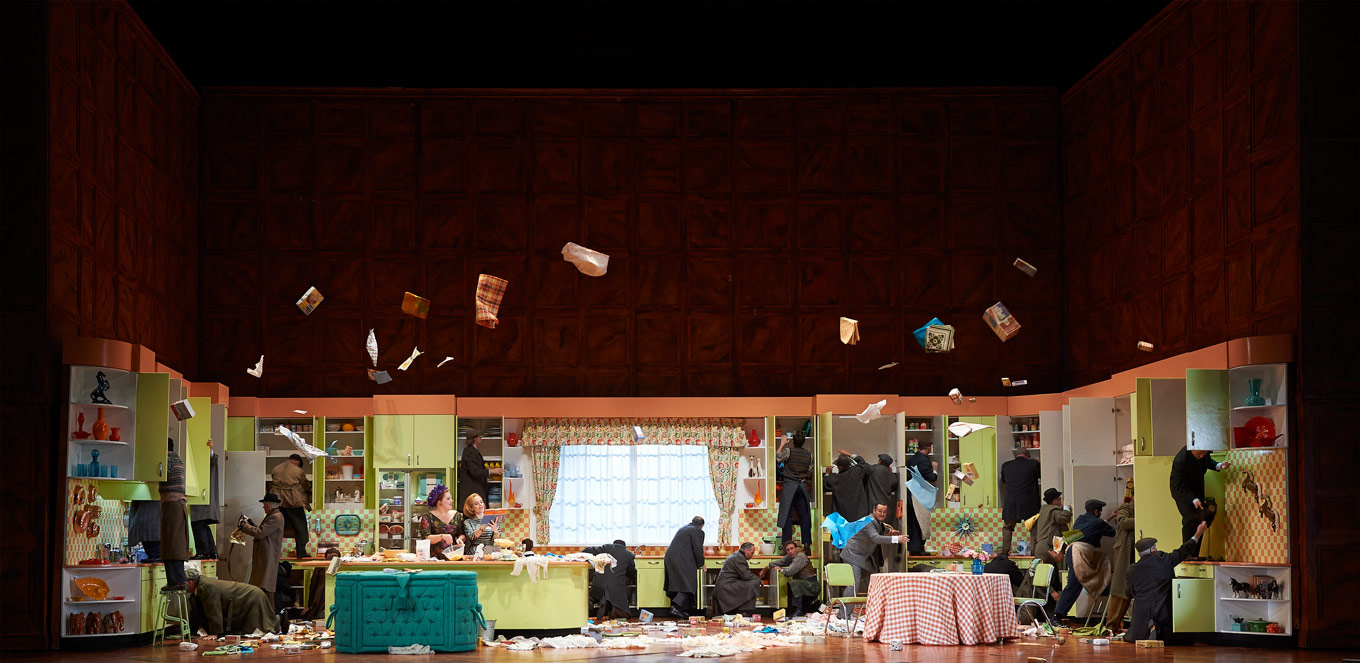
On the production:
**Greg: **Great use of the entire proscenium environment. I find a lot of COC productions tend to design so far downstage it robs the audience of the grandeur that can be achieved. Also act 2, scene 2 in Ford’s house is one of the more entertaining things I’ve seen on stage in a long time; unfortunately, what makes that scene brilliant is somewhat the downfall for act 3, scene 2. I loved the table dance though and I thought that was a neat way to prelude to the actual act of shaming Sir John. In the time Merry Wives was written, people of the village would get together and spank or paddle the unfaithful husband in an act of public shaming. There were a few points where some of the more frenetic staging felt crowded and kind of lacked a plan.
**Jenna: **I thought the production was a true spectacle, and it’s not to be missed if you can manage to grab the quickly-selling tickets. Robert Carsen’s shows are notoriously stark and minimalistic, but his Falstaff has moments of visual candy like you’ve never seen. Set designer Paul Steinberg built tall, almost overbearing walls grounding the sets for each scene, and he filled them with excess whenever he could swing it. Countless room-service trays laying around Falstaff’s room at the inn, delicious chandeliers and dinner tables, and a too-bright, 60s-style kitchen that gets utterly destroyed at the end of the second act. So many props! And when excess didn’t serve the story, Carsen opted for simple without losing any comedy (the third act opens with nothing but a disheveled Falstaff making idle chat with a horse). Costume designer Brigitte Reiffenstuel was a genius throughout; I especially loved the tableau of beautiful outfits on the four ladies, especially Mistriss Quickly’s jacket, with the liner that matched her entire dress. The final scenes with the (fantastic!) chorus were pretty spectacular to look at, with everyone wearing antlers and moving around amid the dry ice and starlight. Scenes like this are another bonus of sitting higher up in the theatre, for sure.
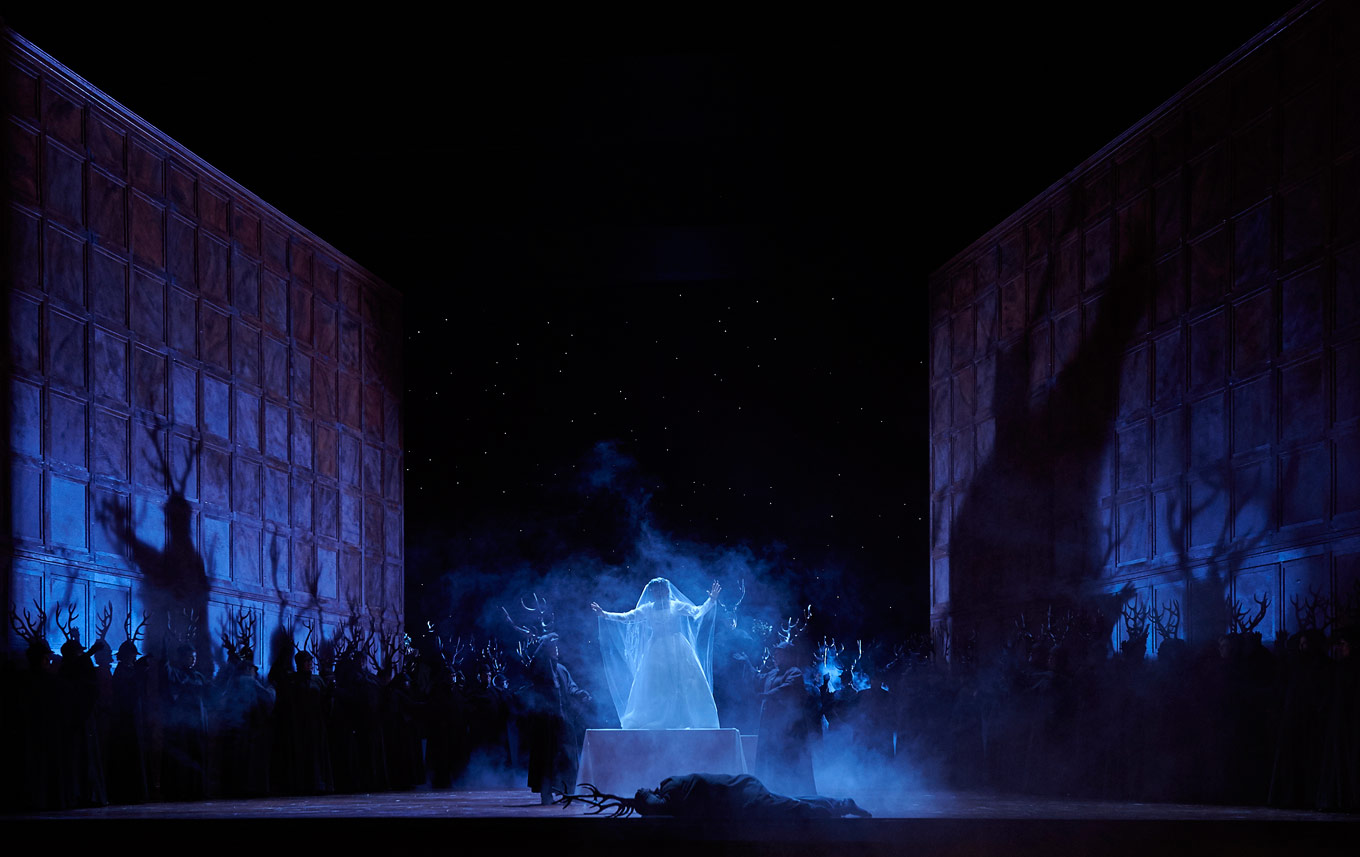
On the design:
**Greg: **Mmmm… luscious teak wood and a masculine view of the Garter Inn, coupled with clean sexy mid-century lines and a muted, highly ‘English’ colour palette contrasts marvellously with the emerging middle class Fords/Pages/Quicklys. Bright yellows and pinks and greens liven up the stage and seem to almost get aggressive towards the end of the chase scene in Act 2 - even though if felt a bit borderline Americana, it was still a lovely transition from the warmer, darker colour of the wooden panelling of the Garter Inn. Costumes were divine, I believe Nannetta’s would be my favourite, her look being a cross between Annette Funicello (Mickey Mouse Club) and Jacqueline Kennedy Onassis (no explanation needed).
Guys, they eat and drink so much food and wine in this show, I found myself jealous of all the red wine being poured. Don’t go hungry or thirsty unless it’s for a great show and hilarious comedy.
On the music:
**Jenna: **Under the baton of Johannes Debus, the COC Orchestra sounded fresh and polished, as they usually do. My favourite musical moments all had to do with Verdi’s sense of humour; the way he writes the four women laughing, the use of all the horns in the orchestra when there’s mention of someone getting cuckolded, and even Falstaff’s gutteral repetitions of the word, “No” were all brilliant and funny and just genius. I mentioned a few balance issues, but again, we were sitting in a problematic area of the theatre. What I did notice was perhaps a hesitancy from Debus to let his tempi fluctuate in order to find something more innate for the singers. There were a few moments (mostly comedic) where the singers want to move ahead; I know the slippery slope of giving an inch in tricky pieces like Falstaff, especially on the fly during a performance. A conductor once passed down a little gem that had apparently come from Wagner: every melody has its own tempo. There’s a fine balance between rhythmic structure and organicism, and I wondered if there was more opportunity for trust between Johannes and singers.
**Greg: **Falstaff moves quickly. Unlike other Verdi masterpieces it really doesn’t get much slower than an andantino. And the presti are FAST. Unfortunately I found oftentimes the orchestra to be covering the singers a little too much (Finley and Lemieux being exceptions). The heavy brass horn work is thrilling, but in such a patter-y opera such as this beast, it can come between the audience and the hilarious text. The frenetic staging I mentioned did cause a few moments to not line up correctly, but due to the deft skill and intimate knowledge of the score the principals had, these were very short-lived. I felt the opening of Act I, scene 2 (doppelquartett) there were some discrepancies in what the actual tempo was, but that was quickly rectified.
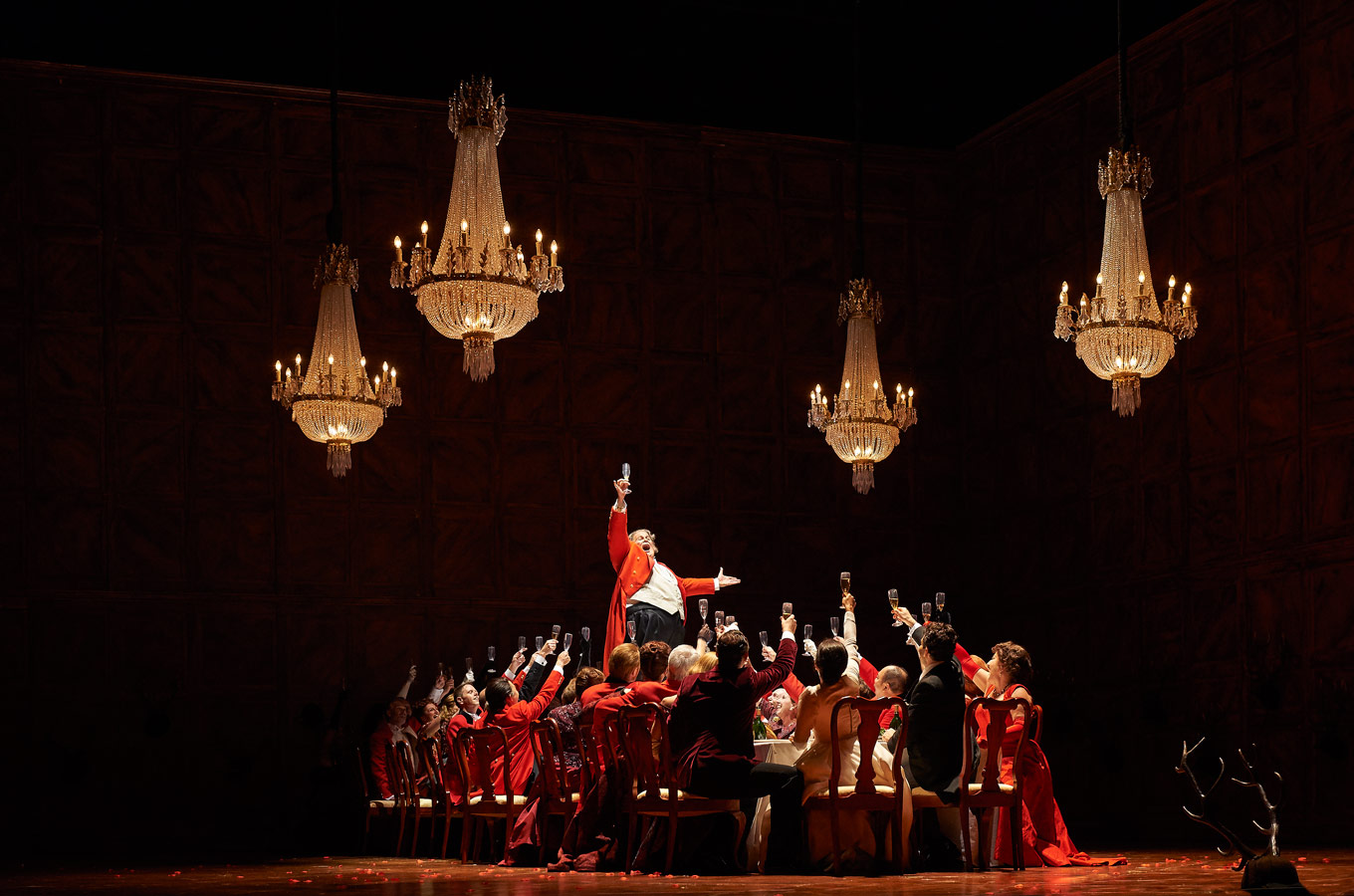
Falstaff runs until November 1st and tickets are selling fast. Click here for details and seats!


Comments